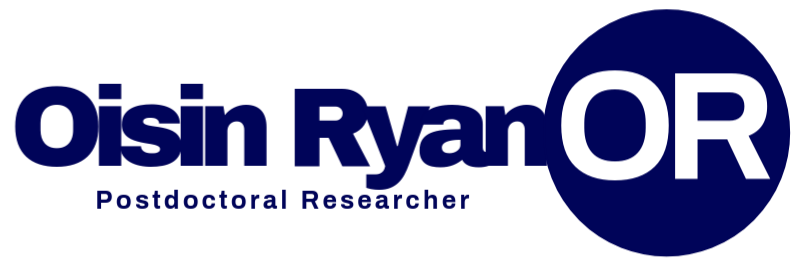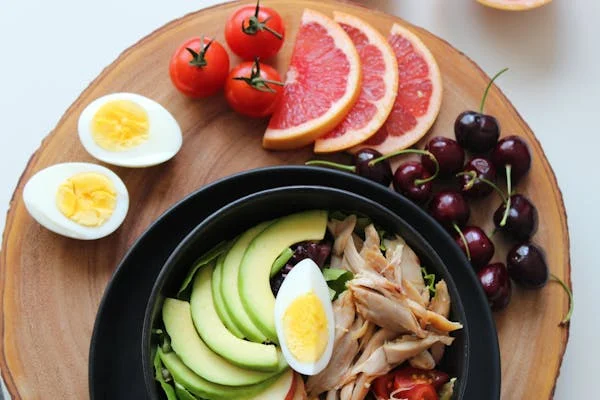Introduction
Shrimp are a popular choice for aquarium enthusiasts due to their fascinating behavior, vibrant colors, and relatively low maintenance needs. However, to ensure your shrimp remain healthy and thrive in your aquarium, understanding their dietary requirements is essential. In this guide, we will provide an in-depth look at shrimp food, including the best types of food, feeding practices, and nutritional needs.
Understanding Shrimp Diets
Shrimp are omnivores, meaning they eat both plant and animal matter. In the wild, they scavenge for food, consuming algae, plankton, and decaying plant and animal matter. In a controlled aquarium environment, it’s essential to replicate their natural diet as much as possible to support their health and longevity.
Natural Feeding Habits of Shrimp
Before diving into the different types of food for shrimp, it’s important to understand their natural feeding habits. Shrimp are opportunistic feeders that prefer to graze on biofilm, detritus, and organic material. They are bottom dwellers, so they often feed on the substrate (the bottom layer of an aquarium), consuming microscopic particles that fall to the ground.
In nature, shrimp often eat:
- Algae: A primary food source for shrimp, offering essential nutrients.
- Decaying Plant Matter: Shrimp contribute to the breakdown of plant material, which is part of their role in the ecosystem.
- Plankton and Small Invertebrates: These are a key protein source for shrimp in the wild.
- Biofilm: A thin layer of microorganisms that form on surfaces like rocks, plants, and wood.
By providing a similar variety of foods in your aquarium, you can ensure your shrimp get all the nutrients they need.
Types of Shrimp Food
When feeding shrimp in an aquarium, you can provide a variety of food types to ensure a balanced diet. These foods can be categorized into several groups, including commercial shrimp food, vegetable-based foods, live foods, and supplemental foods like algae and biofilm.
1. Commercial Shrimp Food
Commercial shrimp food is specifically designed to meet the nutritional needs of shrimp. These foods are available in several forms, including pellets, flakes, and wafers. They are formulated to provide all the essential nutrients shrimp need for optimal growth, health, and reproduction.
Benefits of Commercial Shrimp Food
- Complete Nutrition: These foods often contain a balanced mix of proteins, vitamins, minerals, and fats.
- Convenience: Commercial foods are easy to store and use, requiring little preparation.
- Consistency: Quality commercial shrimp food provides consistent nutrients that help maintain shrimp health.
Some popular brands include:
- Hikari Shrimp Cuisine: Known for enhancing shrimp coloration and supporting their growth.
- Omega One Shrimp Pellets: Rich in essential fatty acids and proteins.
- API Shrimp Pellet: Suitable for a variety of freshwater shrimp species, providing a well-rounded diet.
While these foods are a convenient option, they should not be the sole source of nutrition. Variety is key to a healthy diet for shrimp.
2. Vegetable-Based Foods
Shrimp naturally eat algae and plant matter, making vegetable-based foods an important part of their diet. Fresh or blanched vegetables are great additions to your shrimp’s meal plan.
Common Vegetables for Shrimp
- Spinach: Rich in vitamins A and C, spinach is a favorite among shrimp.
- Zucchini: Low in calories and high in moisture, making it easy for shrimp to digest.
- Cucumbers: A hydrating and nutritious vegetable that shrimp enjoy.
- Carrots: High in fiber and beta-carotene, carrots can be fed occasionally.
- Sweet Potato: Another fiber-rich option that shrimp find appealing.
Blanching the vegetables by boiling them briefly before feeding them to shrimp softens the texture and makes them easier to consume. Always remove uneaten vegetables after a few hours to avoid water contamination.
3. Algae and Biofilm
In their natural habitat, shrimp feed on algae and biofilm, which is a layer of microorganisms that naturally forms on aquarium surfaces. These substances are rich in nutrients and provide a diverse source of food for shrimp.
How to Encourage Algae Growth
- Live Plants: Aquatic plants like Java Moss and Anubias provide surfaces for biofilm to develop.
- Wood and Rocks: Driftwood and porous rocks also encourage biofilm growth.
- Proper Lighting: Algae grows best under moderate lighting conditions. However, too much light can cause algae blooms, so balance is important.
Adding algae wafers to your tank is also a great way to supplement the natural food sources available to your shrimp.
4. Live and Frozen Foods
Shrimp benefit greatly from live or frozen foods because they provide high protein content and encourage natural foraging behaviors. These foods are rich in essential nutrients and can stimulate breeding in shrimp.
Popular Live and Frozen Foods
- Brine Shrimp: Available in both live and frozen forms, brine shrimp are rich in protein and fats, making them an excellent food choice.
- Daphnia (Water Fleas): Small crustaceans that provide essential amino acids and are easy for shrimp to catch and eat.
- Bloodworms: Another protein-rich food, bloodworms are great for adult shrimp but should be fed in moderation to avoid water contamination.
- Black Worms: These are nutrient-dense and provide high levels of protein and fat.
While live foods are excellent for nutrition, they can sometimes carry diseases, so it’s essential to source them from reputable suppliers.
How to Feed Shrimp in an Aquarium
Feeding shrimp in an aquarium requires some careful attention to ensure they receive the right amount of food without polluting the water. Overfeeding can lead to an excess of waste, causing harmful spikes in ammonia and nitrate levels.
Feeding Schedule
Shrimp typically eat small meals throughout the day. Here’s a basic feeding schedule based on their life stage:
- Juvenile Shrimp: Feed them daily with small amounts of food. They need more frequent feeding to support their rapid growth.
- Adult Shrimp: Feed adult shrimp 2-3 times per week. You can offer small portions of food that they will consume within a few hours.
- Breeding Shrimp: When breeding shrimp, they may require more frequent meals to ensure they have enough energy for reproduction.
Portion Control and Avoiding Overfeeding
Shrimp are small creatures, so they don’t require large amounts of food. Overfeeding can lead to water quality problems. A good rule of thumb is to offer only what they can consume in 3-4 hours. Remove any uneaten food to prevent it from decaying in the tank and polluting the water.
Nutritional Needs of Shrimp Food
To keep your shrimp healthy and vibrant, it’s important to understand their basic nutritional needs. Shrimp require a variety of nutrients to support their growth, health, and reproductive success.
Key Nutrients for Shrimp
- Proteins: Essential for growth and reproduction. Brine shrimp, daphnia, and bloodworms are excellent protein sources.
- Vitamins and Minerals: Important for immune function and overall vitality. Shrimp also need calcium for shell formation, so ensure there’s a consistent source of calcium in their diet.
- Fats: Provide energy for shrimp, especially during breeding periods. Foods like brine shrimp and algae contain beneficial fats.
- Carbohydrates: While shrimp don’t require large amounts of carbs, small amounts from vegetables and algae can help maintain energy levels.
| Nutrient | Role in Shrimp Health | Food Sources |
| Proteins | Supports growth, reproduction, and molting | Brine shrimp, daphnia |
| Vitamins | Enhances immune system and vitality | Vegetables, algae |
| Calcium | Essential for shell development | Algae, calcium supplements |
| Fats | Provides energy for shrimp activities | Brine shrimp, bloodworms |
Troubleshooting Common Feeding Issues
Water Quality Concerns
Overfeeding can result in poor water quality, which is harmful to shrimp. Regularly monitor ammonia, nitrate, and nitrite levels to ensure they remain within safe ranges. You can use a water test kit to keep track of the water parameters.
Feeding Shrimp Too Much Protein
While protein is essential for shrimp health, too much protein can lead to excess waste and poor water quality. Balance the amount of protein with plant-based foods and ensure that you are providing a variety of options.
Shrimp Not Eating
If your shrimp aren’t eating, it could be due to several factors, including water quality issues, molting, or food preferences. Ensure the water is clean, and try offering different types of food, such as vegetables or algae.
Conclusion
Feeding shrimp properly is crucial for their health and longevity in an aquarium. By providing a varied diet that includes commercial food, vegetables, live foods, and natural sources like algae and biofilm, you can ensure that your shrimp stay healthy, colorful, and active. Always monitor their food intake to prevent overfeeding and water contamination, and enjoy watching these fascinating creatures thrive in your tank.
With the right care and feeding habits, your shrimp will not only survive but thrive in their environment, providing you with a beautiful and dynamic aquatic display.
FAQs AboutShrimp Food
What should I feed my Shrimp Food in an aquarium?
Shrimp require a balanced diet that includes commercial shrimp food, vegetables (like spinach, zucchini, and cucumbers), live foods (like brine shrimp and daphnia), and natural sources like algae and biofilm.
How often should I feed my shrimp?
Juvenile shrimp should be fed daily, while adult shrimp can be fed 2-3 times per week. If you have breeding shrimp, they may need more frequent feeding to support their energy requirements.
Can I feed my shrimp only commercial Shrimp Food?
While commercial shrimp food provides essential nutrients, it is important to offer variety. Supplement their diet with vegetables, algae, and live foods to ensure a well-rounded nutritional intake.
How can I prevent overfeeding my Shrimp Food?
To prevent overfeeding, offer only as much food as your shrimp can consume within a few hours. Remove any uneaten food promptly to avoid water contamination and maintain good water quality.
What are the best vegetables for Shrimp Food?
Shrimp enjoy vegetables like spinach, zucchini, cucumbers, carrots, and sweet potatoes. Always blanch the vegetables before feeding to soften them for easier consumption.
Why is calcium important for Shrimp Food?
Calcium is essential for shrimp as it helps with shell development and molting. Ensure a consistent source of calcium in their diet through algae or calcium supplements.






